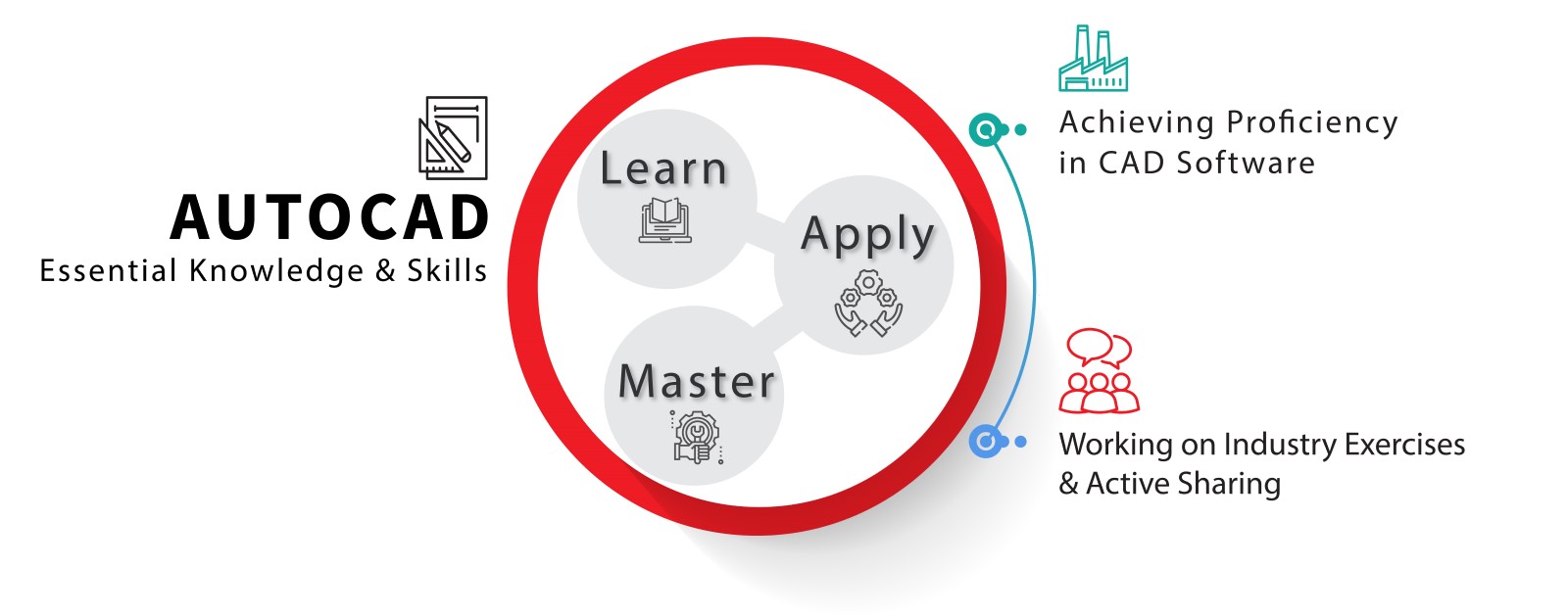Overview
-
Course Date:
TBA
3 Nov 2025 to 24 Nov 2025
-
Registration Period:
TBA
3 Sep 2025 to 29 Sep 2025
-
Duration/Frequency:
21 hours / 7 Sessions / Mon, Wed & Fri (6.30pm to 9.30pm)
-
Mode of Training:
Face-to-Face (Classroom Teaching)
This is a continuation of our AutoCAD 2024 Basics (2D and 3D). It provides the skill sets to use the software proficiently and to enhance workplace standardization and productivity in work output.

Our Trainers are certified by AutoDesk as Autodesk Certified Professionals
Course Objective
The AutoCAD 2D – Intermediate covered the methodology (workflow processes) in using the software. It is thus developed for the practitioner or user with basic knowledge of AutoCAD to improve their competency level in the use of the software.
This course focuses on the features that enhance and speed up workflow processes. It is different from the basic as that caters to users who do not have a basic idea on how to use AutoCAD for its core functionality of creating a simple drawing and model.

